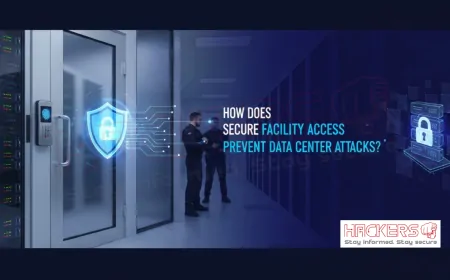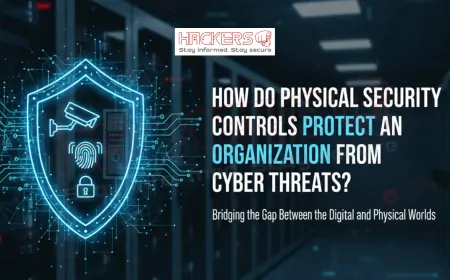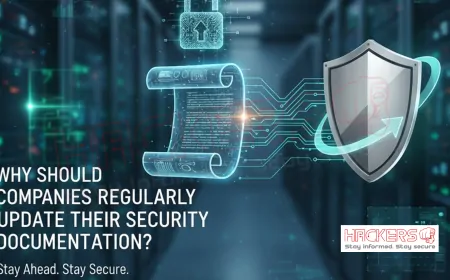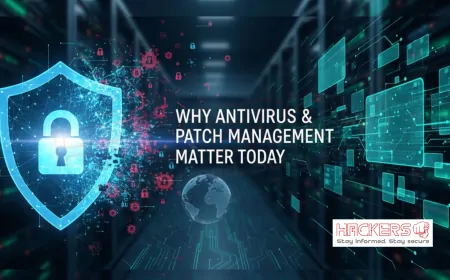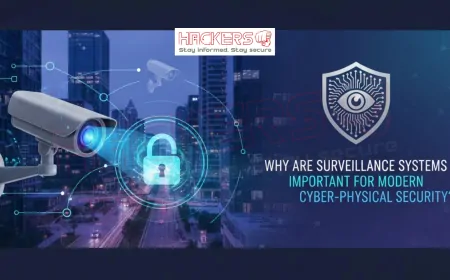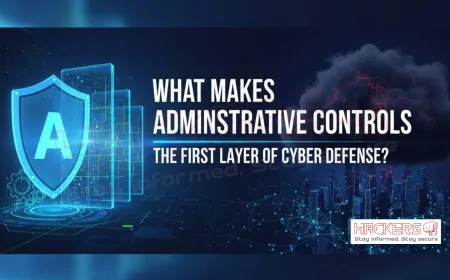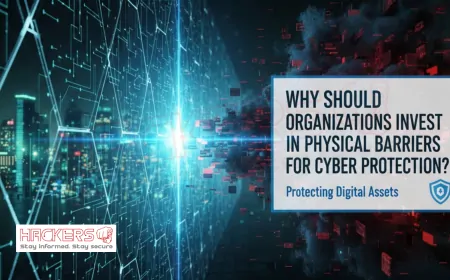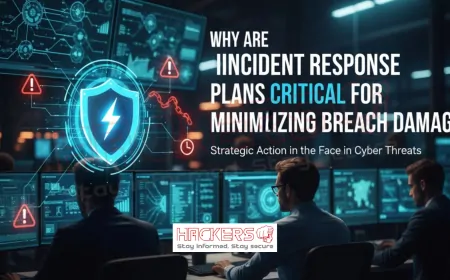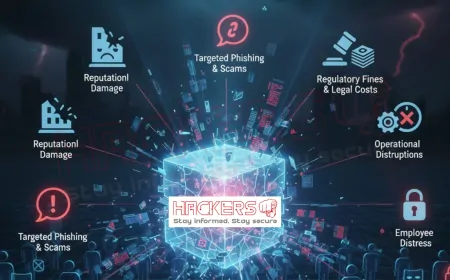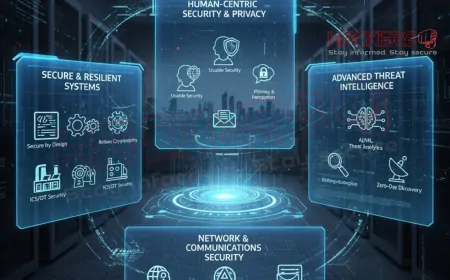What Makes Antivirus & Patch Management Crucial in Stopping Modern Malware?
Imagine logging into your work computer one morning, only to find your files locked and a ransom note demanding payment in cryptocurrency. This nightmare scenario plays out for thousands of businesses daily, courtesy of modern malware. In 2025, with cyber threats evolving faster than ever, malware attacks are not just more frequent: they are smarter, stealthier, and more destructive. Ransomware incidents alone have surged by 37% from the previous year. But amid this chaos, two tools stand as vital guardians: antivirus software and patch management. Antivirus scans for and removes malicious programs, while patch management updates software to fix vulnerabilities that malware exploits. Together, they form a dynamic duo in cybersecurity, essential for any business aiming to stay safe. This blog post dives into why these practices are crucial, explaining concepts simply for beginners. We'll cover the threats, how these tools work, their benefits, and more, showing you why skipping them could cost your business dearly.
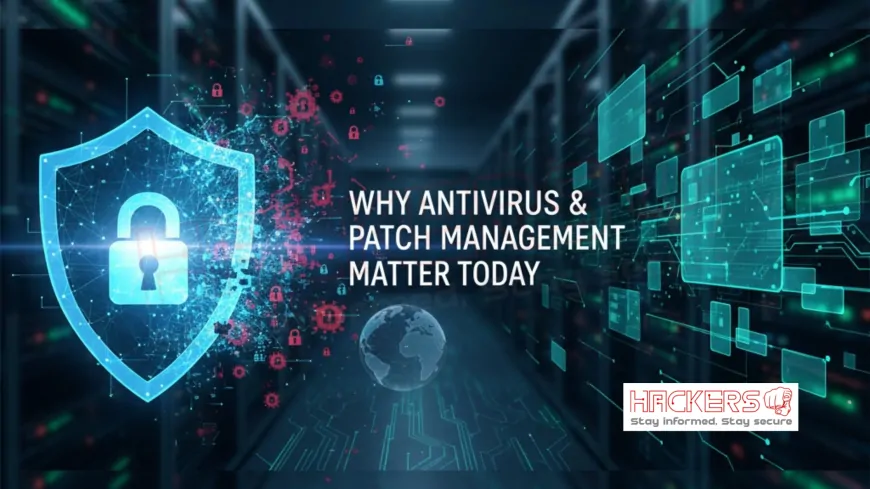
Table of Contents
- Understanding Modern Malware
- The Role of Antivirus Software
- The Importance of Patch Management
- How Antivirus and Patch Management Work Together
- Benefits of Implementing These Practices
- Challenges and Solutions
- Real-World Case Studies
- Best Practices for Businesses
- Future Trends in Malware Defense
- Conclusion
- FAQs
Understanding Modern Malware
Malware is short for malicious software, programs designed to harm computers or steal data. In 2025, it's more advanced than ever, with around 190,000 new attacks every second.
What makes modern malware tricky? It uses AI to evade detection, adapts to defenses, and targets vulnerabilities in software. Human error contributes to 68% of breaches, often through phishing where users click malicious links.
For beginners, think of malware as a thief: it sneaks in through unlocked doors (vulnerabilities) or tricks you into opening the gate (phishing). Once inside, it steals or destroys. This understanding highlights why tools like antivirus and patches are needed: they lock doors and spot intruders.
Malware trends show a shift to stealthy attacks, like fileless malware that lives in memory, not files, making detection harder. Mobile malware is rising too, targeting smartphones. As businesses digitize, protecting against these is paramount.
In essence, modern malware is a shape-shifter, but with the right defenses, you can stay one step ahead.
The Role of Antivirus Software
Antivirus software is your digital watchdog, scanning for and neutralizing malware. It checks files, emails, and web traffic for threats, using signatures, patterns of known malware, to identify them.
In 2025, antivirus is smarter, with 75% of users finding it effective.
Why crucial? It stops infections before damage. For example, it can quarantine a virus, preventing spread. 85% of Americans agree computers need antivirus.
For beginners, antivirus runs in the background, updating automatically to tackle new threats. It's like a vaccine: prevents illness, but needs updates for new strains.
Without it, malware can run rampant. With near-perfect scores in tests
The Importance of Patch Management
Patch management involves updating software with fixes, or patches, from developers. These close vulnerabilities, holes malware exploits.
In 2025, it's front-line defense: without it, small flaws become entry points for ransomware.
Why important? Patches fix known issues, preventing malware use. They improve performance and add features.
For beginners, think of patches as repairs: ignore a roof leak, and rain damages inside. Similarly, unpatched software invites malware.
Best practices include regular scans, prioritization, and testing.
How Antivirus and Patch Management Work Together
Antivirus and patch management complement each other. Patches close doors, antivirus guards them.
Patches fix vulnerabilities antivirus might miss if malware exploits before detection. Antivirus scans for threats that slip through unpatched systems.
In 2025, integrated tools combine them, boosting security by closing flaws and preventing malware.
For businesses, using both creates layered defense: patches prevent entry, antivirus handles intruders.
Together, they address human error and evolving threats, essential for robust protection.
Benefits of Implementing These Practices
Implementing antivirus and patch management offers key benefits. They reduce infection risks, saving costs from breaches.
They ensure compliance with regulations requiring updates and protections.
They build trust: customers know data is safe. In 2025, with more attacks on organizations
They enable quick recovery: antivirus quarantines, patches prevent repeats. Overall, they provide peace of mind.
Challenges and Solutions
Challenges include keeping antivirus updated: solutions are automatic updates. For patches, compatibility issues: test in stages.
Resource strain for small businesses: use cloud-based tools. Over-reliance: layer with training.
False positives in antivirus: fine-tune settings. Downtime from patches: schedule off-hours.
Addressing these makes implementation smooth.
Real-World Case Studies
Case studies illustrate impact. A firm using antivirus blocked a ransomware attack, saving data.
Another neglected patches, suffering a breach: after implementing management, incidents dropped.
A healthcare provider combined both, complying and protecting patients. These show practical value.
Best Practices for Businesses
Follow these practices.
- Choose reputable antivirus with real-time scanning.
- Automate patch deployment.
- Train employees on threats.
- Audit regularly.
- Integrate tools.
These ensure effective defense.
Future Trends in Malware Defense
In 2025, trends include AI-enhanced antivirus for better detection.
Zero-trust models assume breaches, layering defenses. Quantum threats loom, but current tools evolve.
Focus on mobile and IoT protection. Staying informed keeps businesses prepared.
| Malware Type | How Antivirus Stops It | How Patches Help |
|---|---|---|
| Ransomware | Detects and quarantines | Closes entry vulnerabilities |
| Virus | Scans and removes | Fixes software flaws |
| Trojan | Blocks disguised threats | Updates defenses |
Conclusion
In summary, antivirus and patch management are crucial for stopping modern malware by detecting threats and closing vulnerabilities. With rising attacks, their benefits in risk reduction, compliance, and trust are clear. Challenges can be overcome with best practices. As trends advance, these practices remain essential for business security.
What is malware?
Malware is malicious software designed to harm or exploit devices.
Why is modern malware dangerous?
It uses AI to evade detection and targets vulnerabilities.
What does antivirus do?
Scans and removes malicious programs.
How does patch management work?
Updates software to fix security holes.
Why combine them?
Patches prevent entry, antivirus handles intruders.
What benefits?
Reduced risks, compliance, performance.
What challenges?
Updates, false positives, resources.
How solve challenges?
Automate, test, use cloud tools.
Case studies show?
Prevention of attacks, reduced incidents.
Best practice for antivirus?
Choose with real-time scanning.
For patches?
Automate deployment.
Future trends?
AI enhancement, zero-trust.
Stats on attacks?
190,000 new malware per second.
Human error role?
68% of breaches.
For small businesses?
Essential, affordable options exist.
What is ransomware?
Malware locking data for ransom.
Heuristics in antivirus?
Detects by behavior.
Patch downtime?
Schedule off-hours.
IoT protection?
Increasing focus in trends.
Why crucial now?
Rising threats in 2025.
What's Your Reaction?









